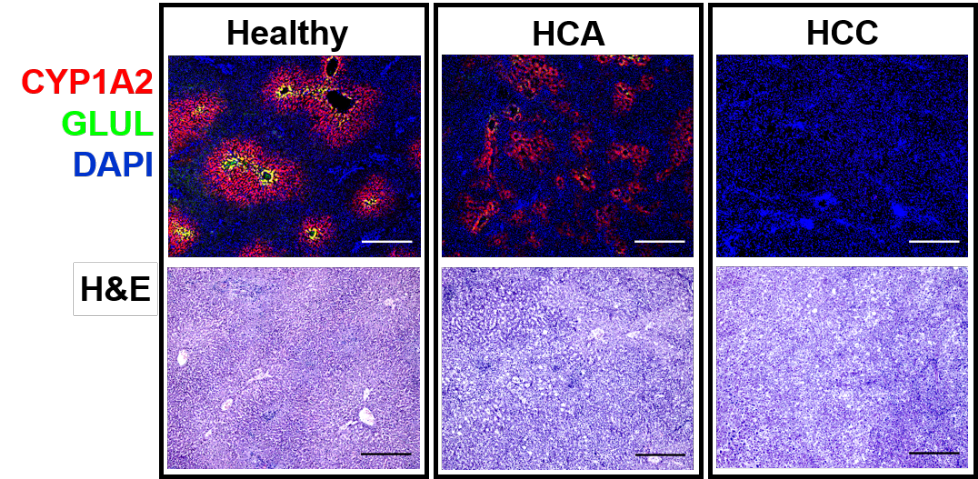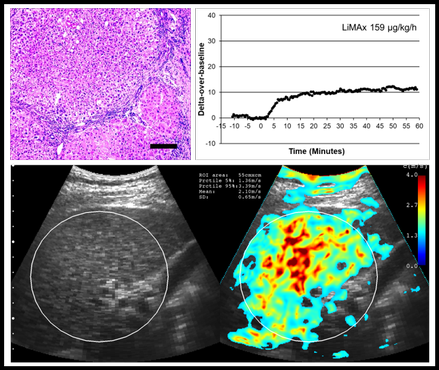News 2019 - Workgroup For The Liver
Main menu:
News 2019
2019/12/07
!!!CONGRATULATIONS!!! Elisabeth Blüther and Erika Valle successfully defended her doctoral theses.
We thank both medical doctors for their contribution to better unserstand the clinical importance of dynamic liver function assessment by the LiMAx test in liver transplant patients and patients with short bowel syndrome.
MANUSCRIPT ACCEPTED: The article entitled "Hepatic CYP1A2 activity in liver tumors and the implications for preoperative volume-
The dynamic Liver MAximum capacity (LiMAx) test reflects the overall functional capacity of the liver. The test measures the CYP1A2-
As one of the main findings, we describe for the first time that hepatocellular adenomas contain remaining CYP1A2 activities, while hepatocellular carcinomas or colorectal liver metatstasis contain infinitely small quantities of remaining CYP1A2 activity. The CYP1A2 activity levels were also reflected on protein abundance, as indicated by immunofluorescence stainings (see Figure below).

Figure 2. Decreased CYP1A2 immunofluorescence signal in diseased liver tissues. Representative CYP1A2 (red) and GLUL (green) IF and H&E stainings in control (left panel), hepatocellular adenoma (HCA, middle panel) and hepatocellular carcinoma (HCC, right panel) tissues. While CYP1A2 imunoreactivity was found pericentrally, as indicated by the GLUL co-
=======================================================================
MANUSCRIPT ACCEPTED: The article entitled "Determinants of Quality of Life in Patients With Intestinal Failure Receiving Long-
The study deals with "Parenteral nutrition (PN) as a life-
=======================================================================
|
Figure. Representative H&E staining, LiMAx and the corresponding THE for a representative case of liver cirrhosis. The LiMAx breath test curves show the 13C- |
MANUSCRIPT ACCEPTED: The article entitled "Non-
The aim of this study was to delineate the structure‐function relationship in the progression of chronic liver disease by combined assessment of liver function by the Liver MAximum capacity (LiMAx) test and tissue‐structure related stiffness by 2D time‐harmonic elastography (THE). LiMAx values correlated negatively with liver stiffness (r = ‐0.747), while liver stiddness increases progressively with the stage of liver fibrosis. Our findings show that structural changes in the liver, reflected by increased tissue stiffness correlates with a decreased metabolic capacity of the liver.
=======================================================================
MANUSCRIPT ACCEPTED: The article entitled "Identification of serological markers for pre-
In this pilot study, we identified pre-
Preoperative fasting times were positively correlated with plasma levels of
|
Figure 2. Correlations between preoperative fasting time and plasma levels of glutamic acid and valine. (A) Glutamic acid (filled circles) correlated negatively (r=- |

